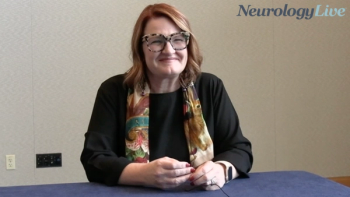
Dual Antiplatelet Treatment Is Safe for Thrombolysis for Ischemic Stroke
A systematic review of 9 studies suggested that pretreatment with dual antiplatelet therapy is not associated with a higher risk of poor outcomes after intravenous thrombolysis.
Konark Malhotra, MD
Amidst conflicting data, a new systemic review suggests that patients with
Ultimately, this result was confirmed by adjusting for potential cofounders. The effort, conducted by Konark Malhotra, MD, vascular neurologist, Allegheny Health Network, and colleagues, included 9 studies and 66,675 patients. “The aim of the present systematic review and meta-analysis is to assess the safety and outcome of DAPP history among patients with AIS treated with IVT,” they wrote.
In adjusted analyses, patients with a history of DAPP did not have higher likelihoods of pooled symptomatic intracranial hemorrhage (odds ratio [OR], 2.03; 95% CI, 0.75—5.52), 3-month mortality (OR, 1.11; 95% CI, 0.87–1.40), 3-month favorable functional outcome, as modified Rankin Scale (mRS) score of 0–1 (OR, 0.92; 95% CI, 0.77–1.09), and 3-month functional independence, defined as an mRS score of 0–2 (OR, 1.01; 95% CI, 0.89–1.15).
READ MORE:
In unadjusted analyses, DAPP was shown to be linked with a higher likelihood of pooled symptomatic intracranial hemorrhage (OR, 2.26; 95% CI, 1.39—3.67) and 3-month mortality (OR, 1.47; 95% CI, 1.25–1.73). As well, according to the definitions of the Safe Implementation of Treatments in Stroke Monitoring Study (OR 2.71; 95% CI 2.05–3.59), European Cooperative Acute Stroke Study II (OR, 2.23; 95% CI, 1.46—3.40), and National Institute of Neurological Disorders and Stroke (OR, 1.59, 95% CI, 1.38–1.83), it was related to higher odds of symptomatic intracranial hemorrhage.
A 2018 study from Georgios Tsivgoulis, MD, PhD—a co-author on the systematic review—and colleagues, which included almost 800 patients, found similar results to the systematic review.2 All told, there were 58 patients (7%) with DAPP prior to the stroke. While there were no differences between the groups in baseline characteristics or outcomes, those who received DAPP tended to be older with more risk factors. After propensity score matching, 41 DAPP patients were matched to 82 non-DAPP patients.
The rate of systematic intracranial hemorrhage with DAPP was 3.4% while those who did not have DAPP had a rate of 3.2%. Although DAPP was associated with higher odds of asymptomatic intracranial hemorrhage (OR, 3.53; 95% CI, 1.47—8.47; P = .005), it was also linked to a higher likelihood of 3-month favorable functional outcome (OR, 2.41; 95% CI, 1.06—5.46; P = .035).
Tsivgoulis, an associate professor of neurology in the Second Department of Neurology in National & Kapodistrian University of Athens, and colleagues also conducted a prospective assessment of Safe Implementation of Treatments in Stroke (SITS) International Stroke Thrombolysis Register on consecutive IVT-treated patients with acute ischemic stroke from 2010 to 2017.3
Propensity score matching resulted in 2 groups (n = 1043 for both), both of which had comparable rates of symptomatic intracranial hemorrhage according to SITS-MOST (2.9% compared to 1.5%; 95% CI, —0.03 to –0.01), European Cooperative Acute Stroke Study (5.2% compared to 4.4%; 95% CI, –0.03 to 0.01), and NINDS (7.7% vs 6.6%; 95% CI, –0.03 to 0.01) definitions. As well, there were no differences in 3-month mortality (17.9% vs 16.6%; 95% CI, –0.05 to 0.02), favorable functional outcome (45.6% vs 46.0%; 95% CI, –0.04 to 0.05), functional independence (59.2% vs 60.7%; 95% CI, –0.03 to 0.06), nor distribution in 3-month mRS scores (2 [range, 1–4] vs 2 [range, 0–4]; 95% CI, –0.29 to 0.09).
REFERENCE
1. Malhotra K, Katsanos AH, Goya N, et al. Safety and efficacy of dual antiplatelet pretreatment in ischemic stroke patients treated with IV thrombolysis: A systematic review and meta-analysis. Neurology. Published online January 20, 2020. doi: 10.1212/WNL.0000000000008961.
2. Tsivgoulis G, Goyal N, Kerro A, et al. Dual antiplatelet therapy pretreatment in IV thrombolysis for acute ischemic stroke. Neurology. 2018;91(11):e1067-e1076. doi: 10.1212/WNL.0000000000006168.
3. Tsivgoulis G, Katsanos AH, Mavridis D, et al. Intravenous Thrombolysis for Ischemic Stroke Patients on Dual Antiplatelets. Ann Neurol. 2018;84(1):89-97. doi: 10.1002/ana.25269.
Newsletter
Keep your finger on the pulse of neurology—subscribe to NeurologyLive for expert interviews, new data, and breakthrough treatment updates.


































